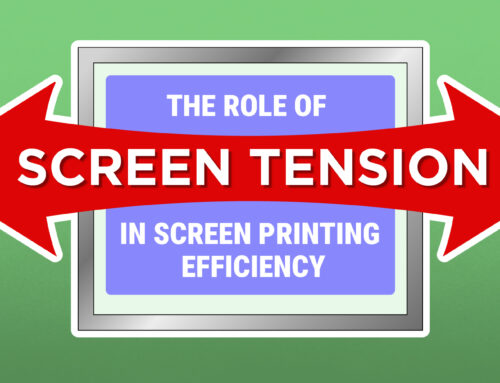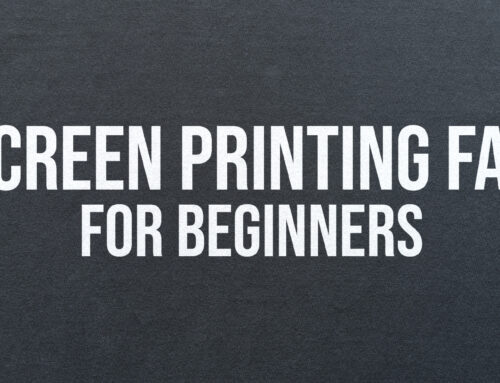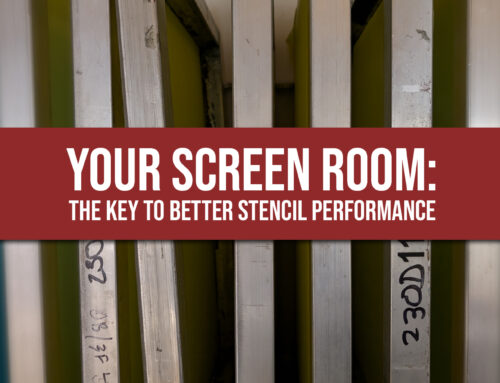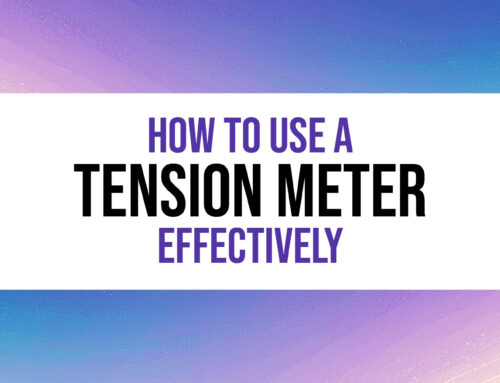In 1994 I worked for a hole-in-the-wall T-shirt shop in Macon, Georgia. Back then we were doing art by hand, had just started using a Mac to typeset text, and were shooting positives on an upright camera. We also had hundreds of wooden screens. When the boss burned a screen, we kept it for years on the off chance we were going to need it again. I never saw anyone checking for screen tension and we’d commonly print with loose or torn screens. It was my first real job so I thought nothing of it, but looking back it was insane how many prints were ruined because we were working with old, low-tension screens.
I recall screens that would have to be physically peeled from the shirt after a pass because the mesh sagged so badly. Other screens would print with one edge smudged because the mesh would literally slide toward me as I pulled the squeegee over. And forget about trying to line up a multi-color job after a year or more. Just a little less tension combined with a slightly warped wooden screen and it was impossible to line up. Maybe restretching screens wasn’t a thing back then or the cost was too high? You tell me. But if I’ve learned anything since then, I know the importance of a properly tensioned screen.
When Is It Time to Restretch My Screens?
For inexperienced screen printers, it might not be obvious when to restretch and remesh your screens. You’ll want to have them restretched when the tension drops below 15-18 N/cm (measured with a tension meter) and ideally before you start seeing the common issues that arise from low-tension screens.
You’ll see poor ink transfer, blurry prints, or registration issues. Also, inconsistent prints with uneven ink deposits, smudging, or difficulty maintaining registration across multiple colors. As well as visible mesh slack where it literally sags in the center, or just feels soft when pressed.
Then you’ve got your more obvious issues like tears, holes, fraying, or stretched-out areas. Maybe you’re seeing fuzzy or smeared edges on your prints. Loose mesh is often obvious when printing multi-color designs as low-tension screens will shift during printing, making it impossible to get a properly aligned print.
I’m sure we’ve all got screens that we keep due to reorders, but after 50–100 print runs (depending on job intensity, ink type, and press type), tension naturally degrades. Automatic presses are especially hard on screen tension due to higher mechanical stress. Though lowered tension may not be as obvious on a one-color design, a well timed measurement with a tension meter will help you solve the problem before it starts.
How to Get Your Screen Printing Frames Restretched.
Though it is possible, with a lot of expensive equipment, to restretch your own screens, typically you’ll want to send them off to have them done professionally. Through our partner, Lawson Screen and Digital, Workhorse offers two unique aluminum screen restretching programs: Frame Restretching and Frame Exchange.
Both programs offer low-cost, high quality restretching and remeshing services for aluminum screen printing frames of any size. Every screen goes through a time-tested process:
- Old mesh is stripped from your frames
- Frames are thoroughly sanded and prepped, restoring them to like-new condition
- They are expertly remeshed with high-quality mesh with the mesh count clearly stamped for quick reference.
With the Frame Restretching Program, the average turnaround is 7-10 business days after we receive your frames. Rush services are available and discounted rates can be applied for bulk orders. You’ll ship your cleaned frames to Lawson. They’ll work their magic then ship your screens back to you. You cover shipping both ways. Remeshing costs between $19-$27 per screen depending on the size and mesh count.
Our Frame Exchange Program offers the same great service but with a quicker turnaround. As the name implies, you’ll be exchanging your old screen for a recycled frame with newly stretched mesh. It’s like a propane tank exchange. You don’t leave with your tank, you trade it in for a freshly refilled, recycled one. With the exchange, we are able to send your new screens out the same day we get yours in, shaving 7-10 days off your wait time. Plus, it’s a bit cheaper at between $16 to $25. So unless you’re emotionally bonded to your own screens, you can call Lawson to see what they have in stock and get like-quality screen replacements super fast.
So now you know when to remesh your screens and how to get them professionally remeshed when the time comes. Let Lawson/Workhorse be your screen printing frame restretching solution.
Check out our Screen Restretch and Exchange program product pages for more details and to get started today.







